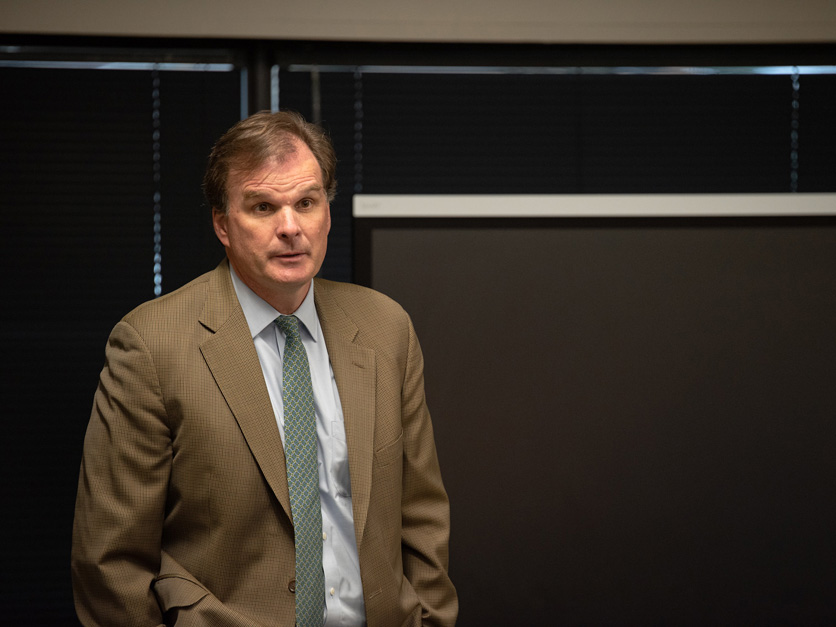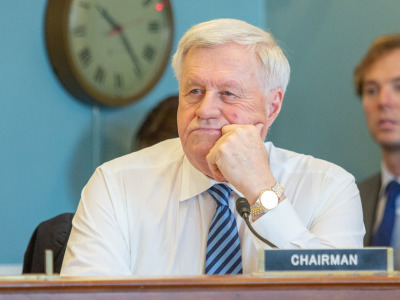The landmark climate deal Democrats hope will clear Congress in the coming days would refocus the coming debate over the next farm bill, satisfying demands for new conservation spending but leaving farm groups still scrambling to fund enhancements to commodity programs.
The Democratic bill, called the Inflation Reduction Act, would dump $19.9 billion into four conservation programs, starting in fiscal 2023, which starts Oct. 1, to help both crop and livestock producers reduce greenhouse gas emissions.
The Environmental Quality Incentives Program alone would get $8.45 billion between 2023 and 2027, which would more than double the program’s existing funding authority under the 2018 farm bill of $8.1 billion for that period.
The bill also would waive an existing EQIP requirement that half the funding go to livestock producers, and allows up to $50 million to go toward conservation innovation grants, with a priority for feed management measures that reduce methane emissions.
The Regional Conservation Partnership Program, which combines federal money with investments from NGOs as well as private and government sources, would get $6.75 billion over the four years, more than five times the $1.2 billion authorized during those years under the 2018 farm bill.
The bill earmarks another $3.25 billion for the Conservation Stewardship Program and $1.4 billion for the Agricultural Conservation Easement Program.
The spending blueprint wouldn’t necessarily be set in stone, even if it becomes law. Congress is due to write a new farm bill in 2023. And Republicans, who are expected to be unified in opposing the reconciliation measure, are expected to be in control of the House and possibly the Senate as well in 2023. They could seek to take the conservation funding for other priorities.
 USDA Undersecretary Robert BonnieBut Robert Bonnie, who is overseeing USDA’s implementation of climate-based agriculture funding as undersecretary for farm production and conservation, says the Biden administration has been crafting its climate policy for agriculture with an eye toward ensuring farm group support for the new funding.
USDA Undersecretary Robert BonnieBut Robert Bonnie, who is overseeing USDA’s implementation of climate-based agriculture funding as undersecretary for farm production and conservation, says the Biden administration has been crafting its climate policy for agriculture with an eye toward ensuring farm group support for the new funding.
“My expectation is that folks on both sides of the aisle … will recognize that there's some things here that are actually working for agriculture and forestry, and hopefully that means that they allow us to maintain those resources,” Bonnie told Agri-Pulse on the sidelines of the International Sweetener Symposium this week in Vail, Colo.
Many commodity groups are pushing for increases in commodity program reference prices, or in the case of sugar growers, for an increase in marketing loan rates. But there’s no obvious source of funding for those increases, and some conservative House Republicans are already pushing for cuts in farm bill spending.
Former House Agriculture Committee Chairman Collin Peterson says there’s virtually no chance that Republicans could get by politically with shifting the reconciliation bill’s conservation funding into other parts of the farm bill, including the commodity title: The conservation funding is a top priority for Senate Ag Chairwoman Debbie Stabenow, D-Mich. Even if Republicans win control of the Senate in November, they won’t have the votes to pass a farm bill on the Senate floor that Stabenow doesn’t support.
The Inflation Reduction Act only needs a simple majority of the Senate to pass since Democrats are using the budget reconciliation process. But reconciliation rules are too restrictive to move legislation such as a farm bill, so it will need 60 votes to pass the Senate.
Peterson said he expects Senate Ag’s top Republican, John Boozman, to join House Ag’s ranking member, Glenn Thompson of Pennsylvania, in supporting more spending for commodity programs to compensate for increased input costs, raising the question of where the funding is going to come from.
Don’t miss a beat! It’s easy to sign up for a FREE month of Agri-Pulse news! For the latest on what’s happening in Washington, D.C. and around the country in agriculture, just click here.
“There’s going to be pressure from traditional agriculture for more money. They're not going to tell them (the committees) how to pay for it,” Peterson said. “I don't have the answers. I have a lot of questions.”
In addition to that funding problem, the conservation funding that Stabenow has secured in the Inflation Reduction Act also would create another potential challenge for the Ag committees: The dramatic increases in spending would vanish after 2026, leaving a huge cliff in funding for programs like EQIP that currently have long backlogs in unfunded applications. Under the reconciliation bill, about three-fourths of the conservation funding is earmarked for fiscal 2025 and 2026, including $6.45 billion of the $8.45 billion allocated for EQIP.
The funding allocation was driven by reconciliation rules that require money in the bill to be spent within a 10-year window. The Congressional Budget Office estimates that USDA can't get all the money spent distributed by fiscal 2032, even though the department would have all the funding in hand by 2026. The largest share of unspent funding would be in the Regional Conservation Partnership Program, according to a more detailed CBO analysis obtained by Agri-Pulse.
 Former House Ag Committee Chair Collin Peterson Still, the cliff in funding authority could put the committees “in a really uncomfortable spot” of deciding whether to leave the funding cliff in place or find some way to soften it, said Bart Fischer, a Texas A&M University economist and a former senior GOP aide to the House Ag Committee.
Former House Ag Committee Chair Collin Peterson Still, the cliff in funding authority could put the committees “in a really uncomfortable spot” of deciding whether to leave the funding cliff in place or find some way to soften it, said Bart Fischer, a Texas A&M University economist and a former senior GOP aide to the House Ag Committee.
One option for lawmakers would be to redistribute the new conservation funding over a longer period of time, rather than the four-year period it’s designated for under the reconciliation bill, Fischer said.
Notably missing from the reconciliation package is a new program dedicated to paying farmers for growing cover crops. The Build Back Better bill that passed the House late last year would have offered producers payments of $25 an acre for planting cover crops.
Bonnie said the conservation program funding could help promote cover crop expansion. “We've got enough flexibility, and certainly in EQIP, even in CSP, to promote cover crops,” he said.
He stressed cover crops aren’t the only practice that farmers need to reduce carbon emissions. “Cover crops won’t work for everybody. They’re incredibly important in some places, and what we've got to do is build that diversity of tools.”
The reconciliation bill also extends the legal authority for the conservation programs to 2031. They are currently set to expire in 2023 with other farm bill programs. The extension was done to comply with Senate budget rules, according to a source.
For more news, go to Agri-Pulse.com.


